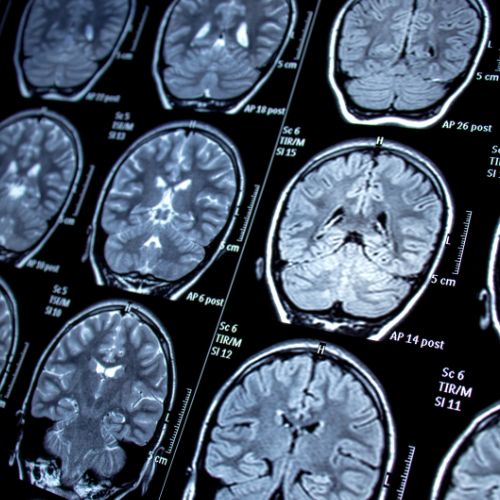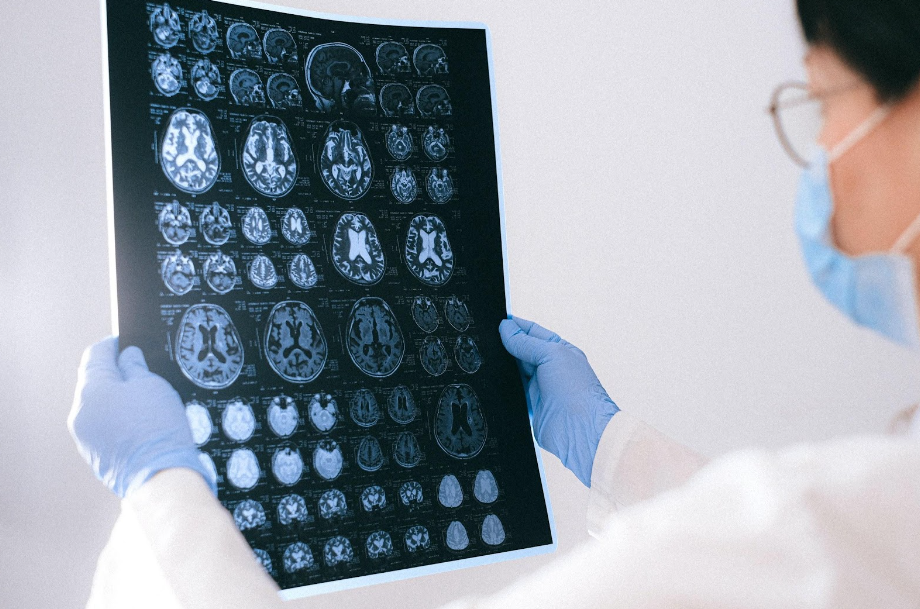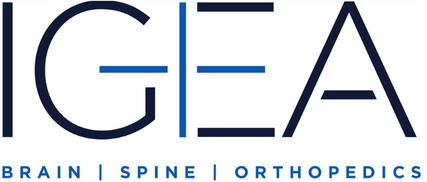What Is Epilepsy? Your Guide
What Is Epilepsy? Your Guide

Did you know that 3.4 million people live with epilepsy in the United States? 50 million people are affected by epilepsy worldwide. If you or a loved one experiences some unusual cognitive and behavioral symptoms that you suspect could be caused by epilepsy, you might find yourself searching for information.
What Is Epilepsy?
Epilepsy is a brain disorder. Typically, the brain consistently produces electrical signals in a coherent pattern, sending them through neurons via neurotransmitters. For those with epilepsy, these patterns are disrupted by a temporary shift in electrical activity.
These shifts occur in the form of a sudden surge of electrical activity in the brain. When the brain's electrical patterns get out of balance, seizures occur, impacting people’s awareness, movements, or sensations.
What Are the Causes of Epilepsy?
While the causes are unknown for 70% of epilepsy patients, there are some risk factors that may contribute to the onset of epilepsy. For example, epilepsy is more likely to affect people with the following medical history:
- Preterm birth or having a low birth weight
- Genetic Causes
- Birth complications leading to oxygen deprivation
- Seizures within the first month of life
- Abnormal brain structures
- Bleeding inside the brain
- Abnormal blood vessel formations in the brain
- Severe brain damage or insufficient oxygen supply to the brain
- Development of brain tumors
- Brain infections like meningitis or encephalitis
- Stroke resulting from artery blockage
- Cerebral palsy
- Traumatic Brain Injury
- Alzheimer's disease (in later stages)
- Prolonged seizures due to high fever
- Substance abuse disorder involving alcohol or drugs
Statistics show that epilepsy occurs in men more often than in women. Children and adolescents are also more likely to have epilepsy of unknown origin than adults.
What Are the Symptoms of Epilepsy?
Individuals with epilepsy might encounter changes in sensory perceptions, such as alterations in smell, taste, or sound. Episodes may involve a loss of awareness, where the person might appear distant or unresponsive. Physical manifestations like tremors, convulsions, and involuntary muscle movements might occur.
Speech difficulties and memory problems are also possible symptoms, impacting communication and cognitive functions. It's not uncommon for individuals with epilepsy to experience fatigue as well, which can be attributed to the neurological disruptions associated with the condition.
How Is Epilepsy Diagnosed?
Epilepsy is diagnosed and managed by neurologists, typically those who specialize in epilepsy (called epileptologists). Along with neurologists, epilepsy care teams include neurosurgeons, radiologists, neuropsychologists, and other professionals.
Epilepsy diagnosis involves assessing symptoms, physical signs, and test results like electroencephalograms (EEGs), computed tomography (CT or CAT scans), and magnetic resonance imaging (MRI). Accurate identification encompasses not only detecting epilepsy but also determining its type and the characteristics of seizures.
Types of Seizures
Seizures can be categorized into two main groups: generalized onset seizures and focal onset seizures.
Generalized Onset Seizures
Both sides of the brain or groups of cells on both sides of the brain are simultaneously affected. This type of seizure can be further broken down into sub-types like tonic-clonic, absence, and atonic seizures, among others.
Focal Onset Seizures
These seizures start in one area or group of cells on one side of the brain.
- Focal Onset Aware Seizures: These occur when an individual remains awake and cognizant throughout the seizure episode.
- Focal Onset Impaired Awareness: These seizures result in confusion or altered consciousness during the seizure.
Epilepsy Treatment Options
Anti-seizure Medications (ASMs)
For the majority of patients with recurring seizures, anti-seizure medications (ASMs) serve as the first line of treatment. These drugs reduce the excessive and erratic electrical signals transmitted by brain cells.
ASMs are highly effective, completely controlling seizures in approximately 70% of patients. Choosing the right medication depends on factors such as the type of epilepsy, potential side effects, existing medical conditions, and interactions with other medications.
Diet Therapy
In select cases, diet therapy has shown promise as an adjunct treatment for epilepsy. The ketogenic diet and the modified Atkins diet are two common dietary interventions that have proven effective in reducing seizures. The ketogenic diet consists of products that contain high amounts of fat, adequate amounts of proteins and low amounts of carbohydrates. This diet is usually started in a hospital setting. The Atkins diet is slightly less restrictive and can be started at home.
These diets primarily benefit children with refractory epilepsy who are not candidates for surgery. Around half of eligible patients experience a reduction in seizures after adopting these diets.
Surgery
Those patients whose seizures are resistant to medications and diets become candidates for surgery. Surgical treatments for epilepsy aim to remove or disconnect the regions in the brain that trigger seizures.
However, not all individuals with epilepsy are suitable candidates for surgery. They must meet specific criteria. For example, those with partial epilepsy arising from a certain brain area are suitable candidates. Also, their epilepsy should originate in a region where its removal won't result in major neurological deficits.
Surgery is preceded by a thorough pre-surgical evaluation process, which includes non-invasive tests like Electroencephalography (EEG), Magnetic Resonance Imaging (MRI), Positron Emission Tomography (PET), and Single-Photon Emission Computed Tomography(SPECT), along with a comprehensive neuropsychological evaluation. These tests aid in pinpointing the origin of seizures and determining the feasibility of surgery.
Invasive Monitoring: Refining Surgical Approaches
When pre-surgical non-invasive tests are inconclusive, invasive monitoring may be necessary. This process involves placing electrodes either on the brain’s surface and/or in the brain’s deep structures to more accurately pinpoint the seizure focus.
Different types of electrodes exist, including subdural and depth electrodes. Functional mapping during invasive monitoring helps identify critical brain regions responsible for functions such as motor control, sensory processing, and language expression and comprehension. This mapping guides surgical planning to ensure no neurological deficits occur after surgery. Similarly, patients that are being considered for surgery typically undergo a Wada test, which assesses the language and memory functions of each side of the brain.
Surgical Procedures: Tailoring Treatments to Patients' Needs
Before surgery is performed, patients should always be informed about all possible outcomes to give fully informed consent.
Several surgical procedures are available to treat epilepsy, each tailored to the individual's specific condition. Surgical resections involve removing abnormal brain tissue and may include lesionectomy, lobectomy, multilobar resection, and hemispherectomy.
Surgical disconnection procedures, such as corpus callosotomy and multiple subpial transections (MST), aim to disrupt the pathways of seizure propagation. Stereotactic radiosurgery, like Gamma Knife radiosurgery, delivers targeted radiation to deep-seated brain lesions.
At present, the FDA has approved two medical devices designed to enhance the management of seizures. These devices provide vagus nerve stimulation and responsive neurostimulation. It should be noted that while both devices enhance seizure control, achieving complete seizure freedom in patients is a rare outcome.
Weighing the Benefits and Risks
Advances in technology have enabled accurate identification of epileptogenic regions and improved surgical techniques, enhancing the potential for successful seizure management. Surgical resection, when appropriate, offers the best chance of achieving seizure freedom. However, it's crucial to carefully assess the benefits against the potential risks before proceeding with any surgical intervention.
While epilepsy is a chronic condition, 70-80% of people with it can lead healthy and happy lives—that’s where precise diagnosis and the choice of the most effective treatment come into play.
At
IGEA Brain Spine & Orthopedic, Dr. De Marco is a board-certified clinical neuropsychologist, with specialization assessing and treating the cognitive (e.g., memory, attention, language) and behavioral symptoms of epilepsy. He is trained in conducting presurgical neuropsychological evaluations that are used during the presurgical phase of treatment. These help assist your or a loved one’s healthcare provider in determining where in the brain seizures may be coming from and to inform the provider of possible post-surgical risks (e.g., decline in memory or language functions or worsening of mood). Additionally, Dr. De Marco provides re-evaluations following surgery to monitor for changes.
Contact us today to book your appointment!







